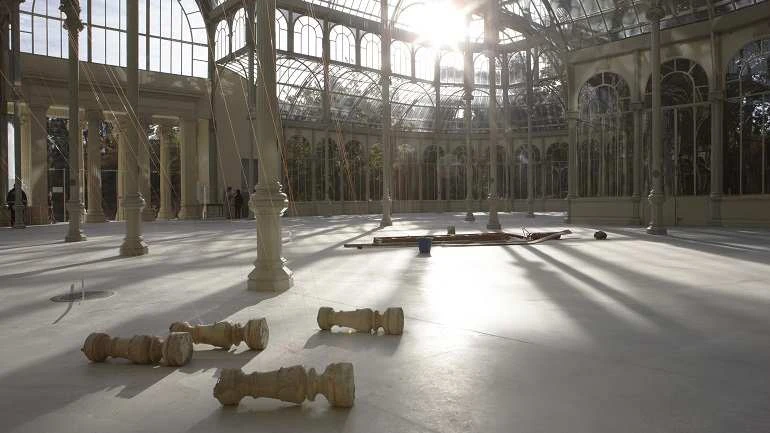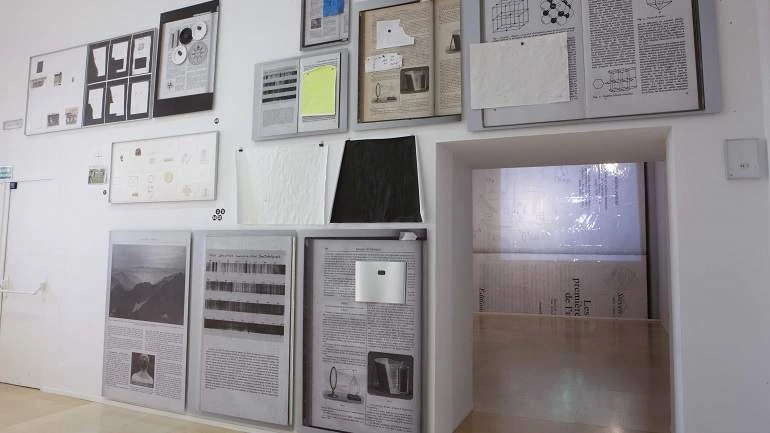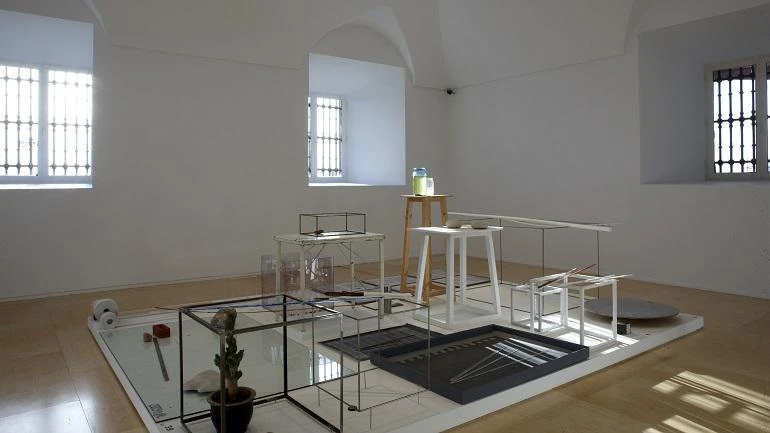Joëlle Tuerlinckx
Crystal Times. Reflexión sin sol/Proyecciones sin objeto
The experience of space and time - in more specific representations rather than as general forms - underpin Tuerlinckx' artistic practices. Her interventions are evasive and modest inasmuch as the viewer does not discern the rays of sun until they approach the Pavilion, seeing as they move closer to each one that a compass is located at the base. One of the compasses is kept in a cabinet with a table, on the surface of which the floor of the building can be discerned. The other compasses, arranged on the floor, all form representations in their handcrafted and improvised state. The different directions, universally indicating north on spheres of the compasses, cannot be accurate; none can be used for orientation in this space, nor can they map movement, meaning it will be necessary to turn to other forms of perception.
The three light beams fall on different angles on the floor, and each are made with a different material. Although theoretically the combination of sun beams and a compass can be used as a reference to time, rather like a sundial, the reality is that it can never be used as an accurate medium. Instead of the mechanical forms of calibrating the passing of time, they are perceived as experience and conjecture; thus Tuerlinckx' work puts forward alternatives to the dependence on scientific instruments.
In tandem, Tuerlinckx has constructed her archives in the two small galleries in the Edificio Sabatini. Playfulness permeates into the way she approaches the lexis of her artworks and the reference books assembled in this archive. The visual inventiveness, rhyme and wordplay, at times verging on absurdity and contradiction, represent the hallmark of the artist's work and reflect the profound irreverence encapsulated in the way she sees conventional forms of meaning.
Artists
Organised by
Museo Nacional Centro de Arte Reina Sofía
Image gallery


